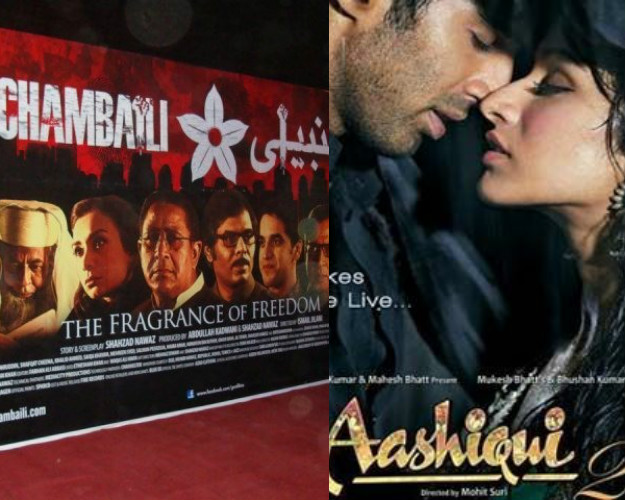6 reasons why every Pakistani should root for Bollywood in cinemas
By boycotting Indian films, we aren’t hurting India as much as we are hurting ourselves

PHOTO: FILE
Pakistani cinema owners all set to lift self-imposed ban on Indian films
1.You don’t have enough talent
It’s high time we addressed the elephant in the room. I’ll be hurting a lot of sentiments by saying this, I know, but we actually don’t have enough talent to sustain a film industry on our own.
To run a lucrative box office, anywhere in the world, you need a minimum of 52 films per year, i.e. one film per week. Since we are a growing industry, let’s cut ourselves some slack and make it 26 films a year. We have hardly been producing half of this number and the reason is quite plain and simple: we don’t have enough skilled labour. To make 26 films a year, you need 26 directors, 26 screenwriters, 26 film cinematographers, 26 sound and camera crews and above all, 26 leading actors. Do the math and let the numbers give you a reality check.
 PHOTO: FILE
PHOTO: FILE2. You’re not giving a cinematic experience to the audience
In the past few years, we’ve made a maximum of what, 12 or 15 films a year, out of which only a handful generated enough numbers to sustain a business. I am excluding regional cinema here because those films don’t get released in digital cinemas and cater to smaller pockets around the country, generating smaller revenues.
In 2016, only Ho Mann Jahaan and Actor in Law delivered something substantial at the box office and the rest were rejected by the audience at large. Even the likes of Dobara Phir Se opened to 40% attendance in Karachi and about 17% to 20% in Lahore.
 PHOTO: FILE
PHOTO: FILE3. You are the footfall
In cinema, we use the term footfall quite often. It is used to describe the number of people in a particular space – in this case, a cinema. In Pakistan, we heavily rely upon the footfall of Bollywood, which means most people come to watch Indian films and as a result, end up watching a Pakistani one because it’s playing in the same slot but on a different screen.
A classic example of how the footfall works was when Chambaili was released alongside Aashiqui 2. People thought it was a really bad move by the producers but because of the footfall from the latter, Chambaili actually ended up making Rs20 million – much more than what was expected. So if you want Pakistani producers to be happy and earn enough to make more films, you need Bollywood (unless you pledge to watch everything Pakistani, regardless of its value for money).
Happy to see my film release in Pakistan: Nawazuddin Siddiqui
4. You don’t own your stars, unless they return from Bollywood
Like it or not but, as a nation, we suffer from an inferiority complex. We respect our artists more when they land a project in Bollywood and then make a big deal out of it when they start endorsing the Indian film industry.
If Shah Rukh Khan is lip-syncing to Shafqat Amanat Ali’s voice, then that’s great because Shah Rukh is Shah Rukh and we should celebrate it wholeheartedly. Atif Aslam may have risen through Jal but he only became the sensation that he is today because of his work in Bollywood. In much the same way, the hype around Mahira Khan – although she was already Pakistan’s leading lady before she signed Raees – quadrupled the moment news of her casting came out. If we’re getting so excited about anything Bollywood, then we might as well accept that it is very much a part of our culture and pay to watch its films. As if we don’t already do it.
 PHOTO: FILE
PHOTO: FILE5. Mehwish Hayat is no Deepika Padukone
Let’s face it: the public at large does not associate local faces with the big screen. First of all, the audience of today largely comprises of people who have grown up without the concept of cinemas. They grew up watching Bollywood films on Pulse Global prints, which is a major reason why it’s a default reaction to associate those stars and that formula with what we believe to be a ‘filmi’ experience.
No matter how well we master their method, it will be years before our audience developes that kind of affinity with Pakistani actors. However, if there are no Bollywood films playing in the meantime, then whatever remains of the cinema-going culture will end. We’ll have to start from scratch.
For the love of art: Showcasing the best and brightest of Pakistani cinema
6. Cinemas are shutting down
All the above have lead to the beginning of the end. It has taken a lot of heart, soul and obviously money to develop new cinemas and a new digital circuit of screens. If things continue the way they’re going, eventually, all of this effort will be rendered futile. That includes a loss jobs, infrastructure, cultural exchange and above all, a congregational space for catharsis.
By boycotting Indian films, we aren’t hurting India as much as we are hurting ourselves. Let that sink in…
Have something to add to the story? Share it in the comments below.



















COMMENTS
Comments are moderated and generally will be posted if they are on-topic and not abusive.
For more information, please see our Comments FAQ